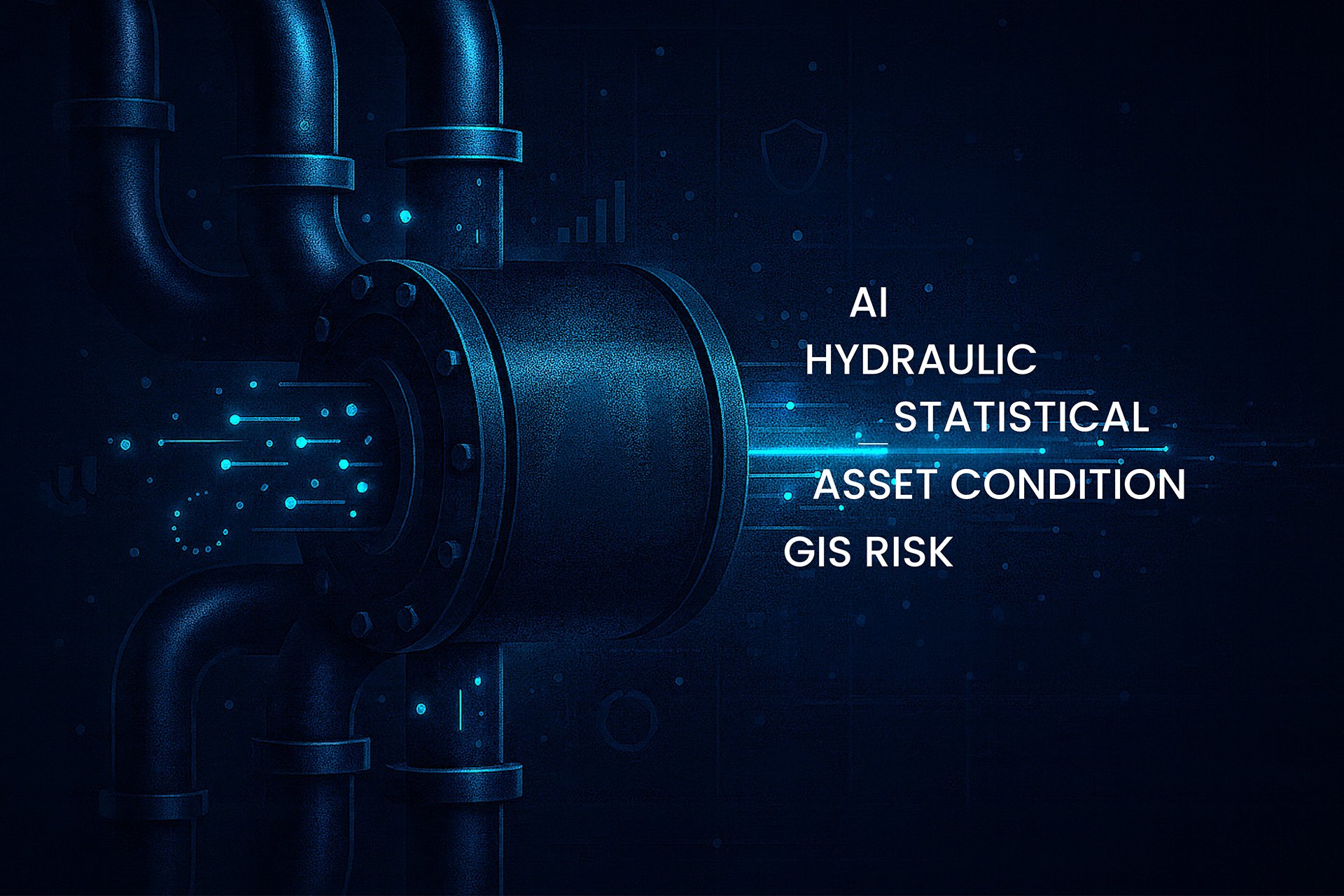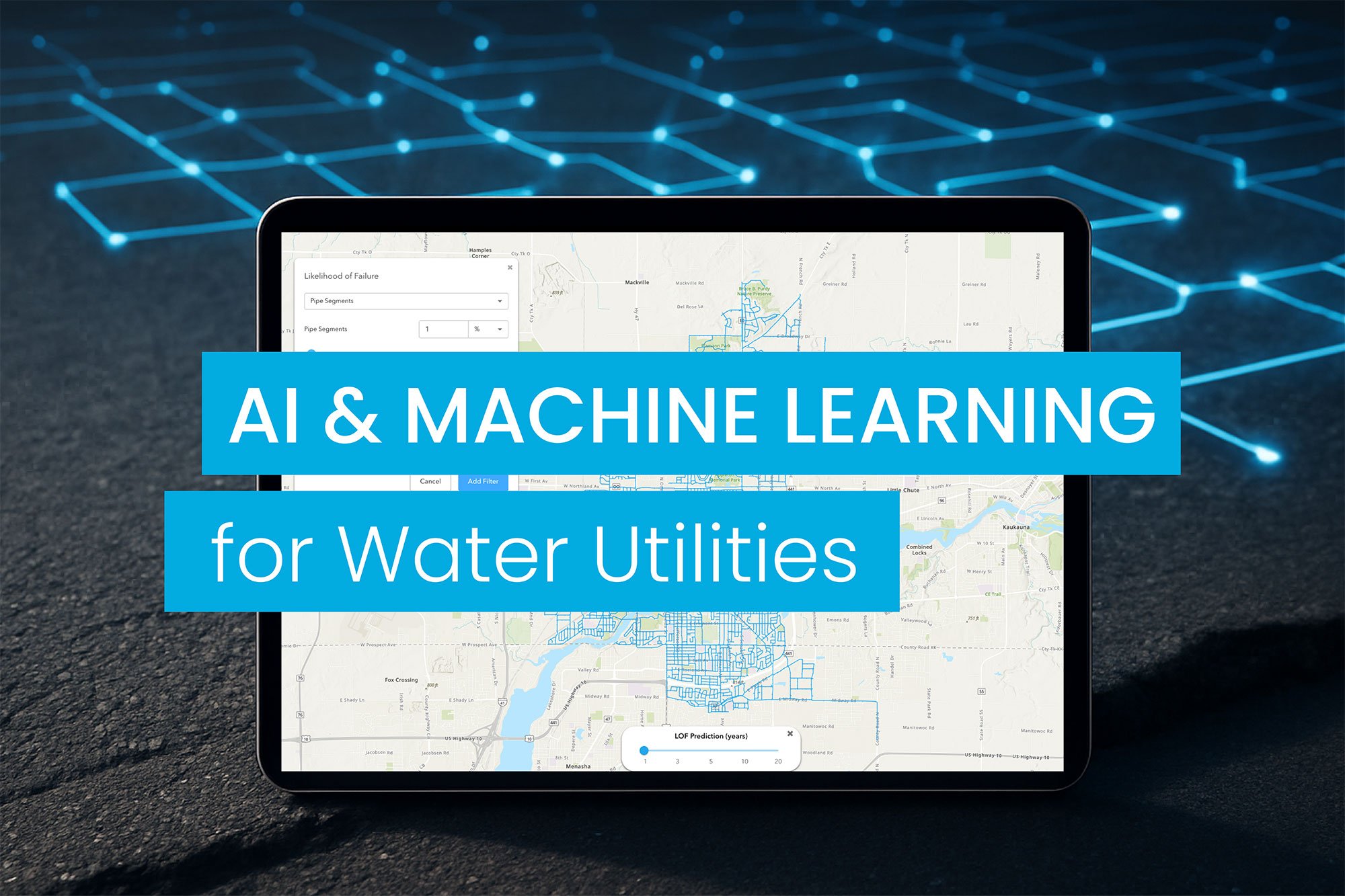As a water management decision-maker, you've likely encountered the hype surrounding artificial intelligence (AI) as a promising and revolutionary solution to nearly every management challenge. AI is not just another buzzword in a long line of digital trends. AI represents a fundamentally different opportunity that addresses both the critical and noncritical challenges facing water utilities.
The Reality Check: Where Water Utilities Stand Today
Water utilities face an unprecedented convergence of challenges. An aging infrastructure is straining under increasing demand, while regulatory requirements are becoming more stringent. Climate change introduces new variables into water supply planning, and the retirements of skilled workers threaten to erode decades of institutional knowledge. Meanwhile, customers expect the same level of service reliability, transparency, and responsiveness they experience from modern utility service providers like energy and telecom companies.
Traditional approaches to these challenges often involve reactive maintenance, manual monitoring, and decision-making based on experience. While these methods have served utilities well for decades, they're increasingly insufficient for managing the complexity and scale of modern water systems.
What AI Means for Water Utilities
AI isn't about replacing human expertise – it's about amplifying it. At its core, AI is simply data from multiple sources assessed by algorithms. It enables utilities to process vast amounts of data, identify patterns that humans might miss, and make predictions that inform better decisions. It helps us make better-informed decisions and can enhance our efficiency. For water utilities, this translates into multiple capabilities. In this article, we will focus on predictive insights and capital improvement planning. In future editions, we will explore enhanced monitoring and operational efficiencies.
Predictive insights enable utilities to manage proactively, using science rather than experience, to make informed decisions. Experience-based decisions for replacing water mains, for example, have typically relied on factors such as pipe age, material, and prior failures. AI algorithms analyze those same variables, plus many others, such as soil type, land use, proximity to roads, bridges, and railroads, weather patterns, pipe slope, and dozens of other variables, to predict pipe and equipment failures with remarkable accuracy (95% prediction accuracy). This improved prediction accuracy enables maintenance scheduling that minimizes disruptions, reduces non-revenue water, and maximizes asset life.
AI excels at analyzing patterns in performance data to predict when failures are likely to occur. For water utilities managing miles of pipeline and hundreds of pumps, valves, and treatment components, this capability is transformative. Instead of following rigid maintenance schedules, relying on a couple of tried and (partially) true variables, or waiting for failures, utilities can perform maintenance precisely when needed, extending asset life while reducing emergency repairs and service disruptions.
See case studies from utilities using AI in the field →
Capital improvement planning for water utilities has been guided by long-term needs to maintain a reliable water infrastructure, coupled with fixed capital budgets. AI can help determine the best allocation of resources by analyzing project priorities, timelines, and potential returns on investment. For example, VODA.ai has developed a capital planning tool that uses AI to prioritize clusters of projects based on the size of the budget, the average cost of labor and materials, and the risk exposure associated with those clusters. AI ensures the capital dollars are spent on areas that yield the greatest return on the investment.
Common Concerns
Data Security and Privacy
Water utilities handle critical infrastructure, making cybersecurity a paramount concern. Modern AI solutions can be deployed with robust security measures, including encrypted data transmission, access controls, and network segmentation, to ensure secure operation. Many solutions can operate on-premises or in secure cloud environments that meet your security requirements.
During vendor evaluations, utilities should always ask how data is encrypted, stored, and protected.
Integration Complexity
Utilities often worry about integrating new AI solutions with existing SCADA and management systems. Today's AI platforms are designed with integration in mind, offering standard protocols that enable seamless connections with most utility systems. The key is choosing solutions that complement rather than replace existing systems.
Staff Training and Change Management
Introducing AI doesn't require utilities to retrain their workforce completely. The most effective AI implementations augment existing staff expertise rather than replacing it. Operators receive better information to make decisions, maintenance teams get clearer priorities, and managers gain deeper insights into system performance.
Early adopters of AI in the water industry are already seeing measurable benefits. According to a study by McKinsey & Co., AI can reduce maintenance costs and increase asset uptime by 5-20%. This translates to significant cost savings for utilities and improved customer satisfaction. Water utilities see typical yearly savings of 10-20% in maintenance operating expenditures and 20-30% in capital expenditures.*
Perhaps more importantly, these utilities are better positioned to handle regulatory changes, climate challenges, and growing demand.
The utilities that hesitate – risk falling behind not just technologically, but operationally. As AI becomes more prevalent, customers and regulators will increasingly expect the level of service that AI-enabled utilities can provide. AI offers practical applications that drive real value.
Starting Your AI Journey
Successful AI implementation begins with identifying specific operational challenges where AI can provide clear value. Start with risk free trials that address well-defined problems and demonstrate measurable results. This might involve predictive maintenance for critical assets, capital improvement planning, automated water quality monitoring, or energy optimization for major pumping stations.
See case studies from utilities using AI in the field →
The most critical factor in successful AI adoption is choosing the right partners. Look for vendors with proven experience in water utilities, strong references, and solutions that integrate well with your existing systems. Avoid vendors that promise unrealistic results or push solutions that require complete system overhauls.
The Path Forward
AI represents more than a technology upgrade – it's an opportunity to transform how water utilities operate. The utilities that thoughtfully and strategically embrace AI will be better equipped to serve their communities, manage their assets, and adapt to future challenges.
The question isn't whether AI will become important to water utilities – it's whether your utility will be among the leaders or followers in adopting these transformative capabilities. The time to begin exploring AI is now, while you can learn, pilot, and implement at your own pace rather than under regulatory or consumer pressure.
Water utilities have always excelled at managing complexity, serving communities, and maintaining critical infrastructure. AI doesn't change these fundamental missions – it provides powerful new tools to accomplish them more effectively than ever before.
*Source: McKinsey & Co. Report: “How to use analytics to improve water asset management.”
This article is part of our AI for Utilities series – where we break down what AI and machine learning really means, how it works, how it helps, and what results utilities are seeing. We also bust the myths around this often mystified technology.
🔔 Subscribe to our blog so you don’t miss the next chapter.




